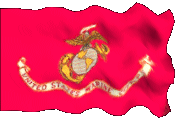OPERATION AUBURN
Continued from page #2:
rest of the day before it was over with. So, we had continuous air strikes and arty and well as gun ships throughout the day and we secured a small enough area to uh, get our wounded and dead and medevac them out. The Battalion CP was approximately 400 meters to our rear. Tape fades and stops.
Combat After Action Report - Operation Auburn
Lieutenant Colonel Rockey, authored a thirteen page after action report. The following are some highlights that might be of interest to 2/3 Marines.
Code Name: Operation Auburn
Date of Operation: 280835H December 1967 031530H January 1968.
280835H December 1967 031530H January 1968.
Location of Operation: Go Noi Island, Quang Tin Province, Republic of Vietnam.
Go Noi Island, Quang Tin Province, Republic of Vietnam.
Air: Fixed wing support was used extensively. A total of 50 missions were run in support of 3' Battalion.
Fixed wing support was used extensively. A total of 50 missions were run in support of 3' Battalion.
Most fixed wing missions were controlled by aerial observers.
Helicopters were utilized extensively throughout the Operation for assault landings, medevacs and resupply.
Intelligence:
The enemy forces anticipated on Operation Auburn were not too expected to exceed one NVA Battalion, two VCMF Battalions, three local force guerrilla companies, and selected hamlet/village defense squads. This intelligence was passed to the Battalion Commander, staff and unit commanders in estimate, briefing and overlay form.
The following enemy units were identified as being disposed in the general area of Go Noi Island or within distance to possibly influence the action:
3rd Bn., 3rd NVA Regt. V-25 Bn
R-20 Bn R-24 Bn Q-13 Co Q-15 Co
28 Dec 1967
(1) At 280835H Company I and Company E, 2"a Battalion, 3ra Marines and the Alpha Command Group, commenced deploying by helicopter from the 3`a Battalion, 5`h Marines Combat Base to assigned LZ Hawk.
At 280835H Company I and Company E, 2"a Battalion, 3ra Marines and the Alpha Command Group, commenced deploying by helicopter from the 3`a Battalion, 5`h Marines Combat Base to assigned LZ Hawk.
(4) At 280940H Company E
At 280940H Company E 2nd Battalion, 3' Marines encountered heavy small arms fire while moving from LZ Hawk to Objective B. Company E returned fire and called air strikes. Company E advanced through initial enemy positions at 993533 and by 281115H
2nd Battalion, 3' Marines encountered heavy small arms fire while moving from LZ Hawk to Objective B. Company E returned fire and called air strikes. Company E advanced through initial enemy positions at 993533 and by 281115H
began receiving heavy automatic and semi-automatic weapons fire from enemy positions in the vicinity of 991532. Company E requested and received fixed wing support. This action continued until 281650H at which time Companies E and M broke contact and moved into night defensive positions centered at 996538.
(11) At 281710H an AO on station reported observing thirty-two enemy bodies, most of which were in green utilities, in front of Company E 2" Battalion, 3" Marines position.
At 281710H an AO on station reported observing thirty-two enemy bodies, most of which were in green utilities, in front of Company E 2" Battalion, 3" Marines position.
(12) At 281800H, Companies E 2/3, M 3/5, and the Bn Command Group moved into night defensive positions centered at 996538. Company I organized a separate perimeter centered at 997536.
At 281800H, Companies E 2/3, M 3/5, and the Bn Command Group moved into night defensive positions centered at 996538. Company I organized a separate perimeter centered at 997536.
3 Januarv 1968
(5) At 031400H Company E, 2°d Battalion 3' Marines chopped to parent unit.
At 031400H Company E, 2°d Battalion 3' Marines chopped to parent unit.
Results:
(1) Enemy - 3 7 KIA (confirmed) Friendly - KIA - 23
Enemy - 3 7 KIA (confirmed) Friendly - KIA - 23
WIA - 62 - (52 WIAE and 10 WIANE)
Commander's Analysis
a. As the initial landing was made in landing zone Hawk on D-Day, the zone progressively moved westward, with each helicopter wave landing a little farther west than the last wave. This increased the coordination difficulties faced by the CO, Company E, 2°d Bn 3rd Marines. As that unit became more deeply and closely involved in heavy contact with the sizable enemy force southwest of LZ Hawk, it became apparent that our mission of establishing a blocking force along the railroad track was impractical. Con-sequently, Company I, 3`d Bn, 5`h Marines was called from objective A to support Company E, and the Bald Eagle, Company M, 3`d Battalion, Sr' Marines, was committed into LZ Hawk at L + 5 1/z hours. By 281630H, the situation was well in hand, and te enemy had broken contact.
As the initial landing was made in landing zone Hawk on D-Day, the zone progressively moved westward, with each helicopter wave landing a little farther west than the last wave. This increased the coordination difficulties faced by the CO, Company E, 2°d Bn 3rd Marines. As that unit became more deeply and closely involved in heavy contact with the sizable enemy force southwest of LZ Hawk, it became apparent that our mission of establishing a blocking force along the railroad track was impractical. Con-sequently, Company I, 3`d Bn, 5`h Marines was called from objective A to support Company E, and the Bald Eagle, Company M, 3`d Battalion, Sr' Marines, was committed into LZ Hawk at L + 5 1/z hours. By 281630H, the situation was well in hand, and te enemy had broken contact.
b. Upon receipt f 5' Marines Frag Order 76-67, we proceeded westward on Go Nio Island, in compliance with our new mission, until D+6, when we extracted from Phu Lac (6) in the 2°d B, 5`i` Marines, TAOR. Contact with significant enemy forces was not made due to the abundance of luxuriant natural cover and concealment, and the large area covered. I feel that a larger force than a Battalion is required for adequate coverage of the AO. Large enemy forces could have evaded our search and destroy efforts, concealed in the vast expanses of elephant grass, in some cases reaching twelve feet in height.
Upon receipt f 5' Marines Frag Order 76-67, we proceeded westward on Go Nio Island, in compliance with our new mission, until D+6, when we extracted from Phu Lac (6) in the 2°d B, 5`i` Marines, TAOR. Contact with significant enemy forces was not made due to the abundance of luxuriant natural cover and concealment, and the large area covered. I feel that a larger force than a Battalion is required for adequate coverage of the AO. Large enemy forces could have evaded our search and destroy efforts, concealed in the vast expanses of elephant grass, in some cases reaching twelve feet in height.
c. The unnecessary check fires imposed on direct support artillery on D-Day was and
The unnecessary check fires imposed on direct support artillery on D-Day was and
is a matter of great concern. Vitally required fire support was needlessly withheld from the Battalion because of this imposition. The tactical unit controlling the operation must be allowed to effect the necessary coordination of all supporting arms.
Recommendations
a. That future Operations in this AO should be conducted by a minimum of two maneuver Battalions.
That future Operations in this AO should be conducted by a minimum of two maneuver Battalions.
b. That an extensive defoliation program should be immediately initiated in the AUBURN AO.
That an extensive defoliation program should be immediately initiated in the AUBURN AO.
c. That checking the fire of direct support artillery should be the sole responsibility of the supported unit commander.
That checking the fire of direct support artillery should be the sole responsibility of the supported unit commander.
W.K. ROCKEY LtCol. U.S.M.C.
Reflections:
When I was asked by Major Jim Cannon, Echo 2/3 website and Echo Company Historian, to offer information about Operation Auburn I agreed because I knew I could deliver to the Marines of Echo Company, factual information mostly due to oral and written documents I have in my possession. I guess I have obtained these items searching for answers as to why so many good men died or were wounded.
In reality we were out manned by the NVA and VC when we were dropped off in a well-fortified area. Using our tactics of the times we were sucked into an U-shaped ambush and basically slaughtered. Every man of Echo Company on that day fought for their lives. This wasn't one Platoon or Squad in trouble, every one of us had to escape death either as a group or as an individual. But the question that still haunts me all these years later is...they must have been given information about this Operation due to the fact that our original landing zone was made unattainable ( pungy stakes sixteen feet long to puncture helicopters ) to us and we were moved to an area that the enemy had prepared for our demise. As we all know the enemy did not stand and fight with us unless they knew they had the upper hand.
Does this still bother me? Yes, it does. I think about my fellow Marines and Operation Auburn each day in some way, even if only for a brief moment. Why do you think the ls` Marine Division Oral Historical Unit came to talk to us? What were they searching for? Answers to combat tactics so this won't happen again? How did we become part of Marine Corps history, because we got our ass kicked?
Please understand that I am not an authority on Operation Auburn, I lived it and I am trying to report it for others to read as the history event it is. Other excellent reports to read are written by Lanny Johnson on 31 July 1999. I believe this report is on line in the 2-3-3 website. Also, Earl Gerheim, USMC Correspondent expressed his views when he was attached to 3/5 on Operation Auburn. (wNvw_usmcwifc.hylaerinart.net/aubua-ti.litm) There are no books written on Operation Auburn, yet.
Remember, it was Vietnam, anything could happen, and it did.
Bill Smith
7201 Castle Drive Dublin, California 94568 925-833-0621
e-mail - da190@aol.com

Your Comments Welcome


Paul Marquis
Web Master